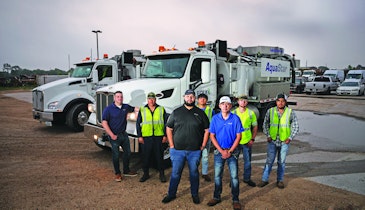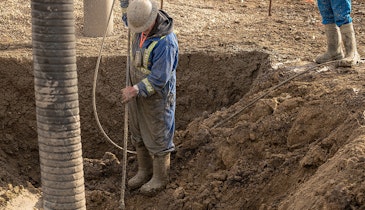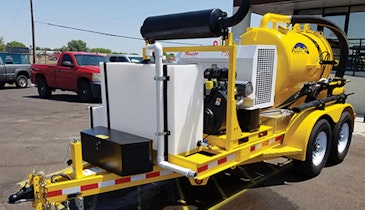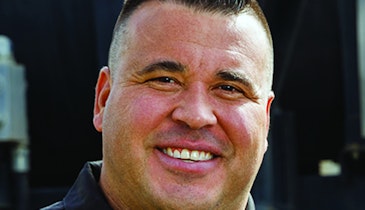Interested in Excavation?
Get Excavation articles, news and videos right in your inbox! Sign up now.
Excavation + Get AlertsIt’s hard to avoid winter temperatures, especially when living in the depths of the Midwest, coastal New England or the rolling mountains of the West. Operators must winterize equipment to keep it in tip-top operating shape through the bone-chilling months.
The amount of winter care your equipment needs is dependent on the type of machine, how it’s being used and the climate you’re operating in. As a best practice, always check your operator manual for guidelines on servicing your equipment throughout the year, and keep the following tips in mind:
- Prepare for frost. The first step on a job is to dig a pilot hole or trench to see where the frost line is located. Year-to-year frost depth can change, and it can slow down production and make it easier to break a chain.
- Keep fresh teeth on hand. Teeth wear faster in cold temperatures, particularly when working in frost conditions and hardened soils that are more abrasive. As a rule of thumb, check your teeth twice a day during winter months, once in the morning before a job begins and once at the end of each day.
- Check chain tension. In colder climates, it is especially important to have the proper tension on your chain. The climate can alter the temper of steel chain components, causing them to wear faster and potentially crack.
- Properly grease your machine. To reduce friction on moving components and improve longevity of your equipment, be sure all components are properly greased. Before winter sets in, have all grease points serviced.
- Monitor coolant and fluid levels. Provide protection by using the recommended antifreeze/water mixture for the lowest temperature expected during operation. Service your machine before the winter season to help ensure all fluids are running properly through the machine, and oil and filters are changed.
- Maintain the battery. Remove cables, clean cable ends and posts, and clean and tighten terminals on the cranking motor. Never charge a frozen battery.
- Warm your machine prior to operation. Prior to beginning a job, start your machine to warm hydraulics and oils. In extremely cold temperatures, once you start the machine, keep it running. This will save time getting it to start and keeping it warm before operation.
- Let your machine determine the pace. In extremely cold temperatures, machines will not work as fast as they do in warmer months. Don’t force your machine, as it might stop production all together.
Your local Ditch Witch dealership can help you make the most of your cold-weather productivity, and can suggest winterizing techniques suited to your particular operation. To find a dealer near you, visit www.ditchwitch.com/find-a-dealer.






